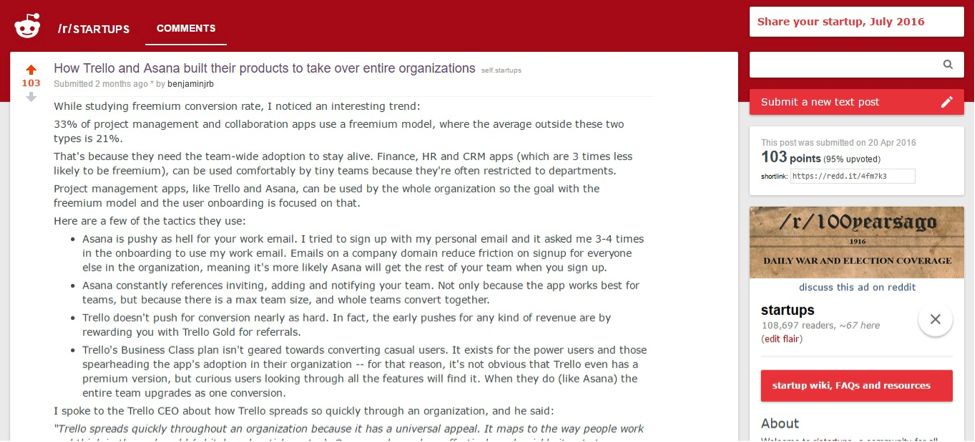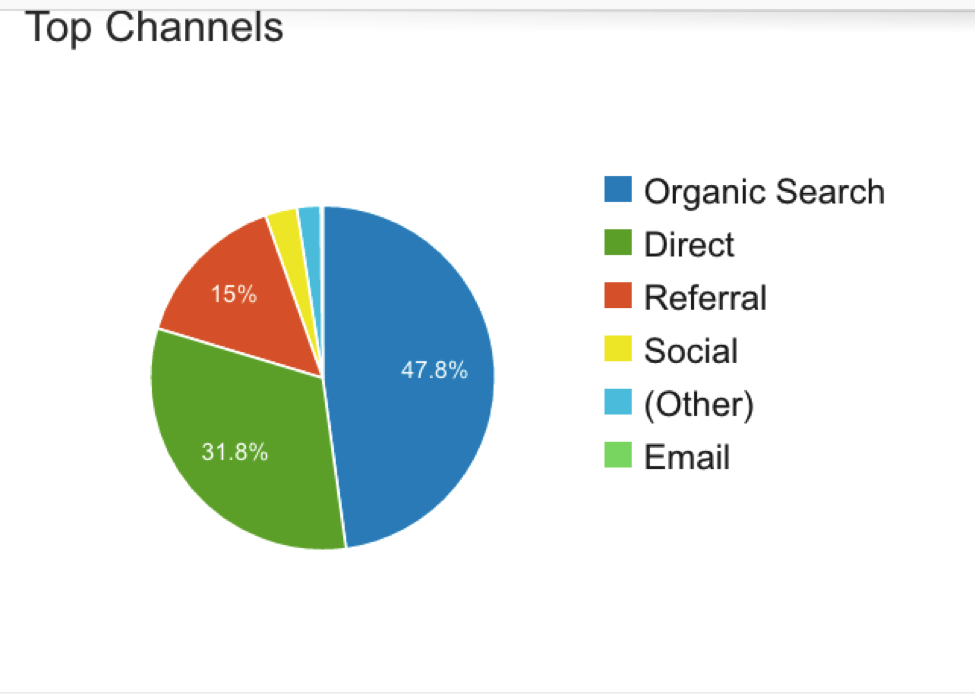The following is a guest post by Benjamin Brandall. Benjamin Brandall is the head of content marketing at Process Street, where he writes on productivity, SaaS, and startups. Find him on Twitter: @benjbrandall
No matter how good the content you create is, if you don’t have a killer marketing process in place, you’ll get little to no return for your efforts. For one thing, very few people will know that the content even exists, and you’re unlikely to be able to get any decent SEO strategy going through a lack of backlinks.
Having said that, it doesn’t have to be incredibly difficult to start getting traction; in fact, once you’ve got your foot in the door, it’s much easier to get further exposure for your efforts. The key is getting that initial exposure, and being consistent in your efforts whilst covering a wide selection of tactics.
Back at Process Street, we’ve slowly refined our content marketing system through trial and error, to the point where the fruits of our labors are totaling 100,000 monthly pageviews. Seeing as most of you don’t want to go through the massive amounts of research and testing that we had to, here’re the core concepts which you need to start putting into practice to see the same results!
Before you read on - we have various resources that show you exactly how to use social networks to gain massive traffic and leads. For instance, check out the following:
FREE Step-by-Step Twitter Marketing GuideFREE Pinterest Marketing Ebook
Submit To Social Bookmarking Sites
Social Bookmarking sites such as Reddit, GrowthHackers, Bizsugar, and ProductHunt are absolutely vital for getting as many pageviews as we do. However, should you be tempted to attempt to abuse these sites you’re likely going to have the accounts you submit with (at best) or even every single link back to your site (at worst) blacklisted.
For example, although we submit to various subreddits, we make a note of the rules of each and everyone and strive to abide by all of them. Not only that, but we maintain natural accounts so as not to be entirely self-promotional; every day, each member of our team will spend 5-10 minutes on each site we submit to using their personal accounts – they would do it anyway, so we may as well take advantage of that.
In a similar vein, we also take care to cater to the community of the various sites we submit to. For example, if an article aligns with /r/startups and we want to submit the post there, the best formula we’ve found is to do a write up of the post, a bullet point summary, a link to the post and then a question to pose to the community. We do this because we’re familiar with that particular subreddit’s culture, and know that most people don’t want to have to leave the site in order to be shown valuable content.
Use Social Media (But Consider Focusing On A Single Site)
Facebook, Twitter, Instagram, you name it, if it’s relevant to your content then you need to be on there and active. At the same time, however, you don’t want to be spreading yourself too thin; it’s much more advantageous to focus on interacting thoroughly on a single site while covering the basics of others.
For example, we use Twitter to a huge degree, as this allows us to interact with influencers and our audience easily. This way we can forge connections spread our content through shares and retweets and even make it easier to grab a guest posting slot or two, all by just talking to people relevant to our field.
Guest Post Like You Mean It
If you hadn’t already gathered by my presence here, guest posting on other blogs is a great way to both gain some brand awareness and get a few backlinks to your relevant content. A word of warning, though; much like with submitting to social bookmarking sites, if you attempt to do nothing but serve your own purposes, you’re going to get burned.
Essentially, don’t get greedy with links. Share the love by linking to both your own content (not more than 3 links, depending on the length of the article and the rules of the site you’re writing for) and the site’s existing posts. Think about it as if you were the one accepting a guest post – if the article isn’t valuable enough to be on your blog, or is obviously just a front to shovel some backlinks out of your site, you wouldn’t accept it.
Our team, for example, started out guest posting by pitching smaller blogs relevant to our field. At the same time, our focus on Twitter allowed us to slowly build relationships with influencers on various sites, which in turn gave us an avenue through which to pitch guest posts once our blog had grown and we had a few offsite posts under our belt.
Hey, before you read on - we have in various FREE in-depth guides on similar topics that you can download. For this post, check out:
FREE workbook: CREATE AWESOME BLOG POSTSFREE Beginner's Guide: START A BLOG
Is your content marketing not working out as it should – or you hoped for? We can help.
Join us for a free email course about content marketing.
Learn what is missing in your content marketing that is costing you all chances of content marketing success.
find out why content distribution is the key to reaching a targeted audience – and get a checklist for your content distribution for each piece of content.
Find out how you can create more content without working like a horse.
Learn why your content is not getting the reactions, shares, and conversions you hoped for – and what you need to make it all work!
Are you in? Join us here for 4 days and 4 emails!
SEO, SEO, SEO
Half of the battle with content marketing is sharing your content with a potential audience. The other half is letting them find it on its own, by employing one hell of an SEO checklist.
Back at base, we optimize pretty much everything we can to rank in search engines. Templates are used to link back to blog posts; blog posts link to templates, onsite links to offsite, offsite links to onsite. Natural search traffic makes up around half of our monthly pageviews, and without a watertight and incredibly thorough SEO process this just wouldn’t be possible.
First up, keyword research is a must. If you want your content to be ranking at all, then you should be cracking down on the best keyword for the job. Hell, even if you’re not too fussed about the content in question (be it lacking unique value or quality), targeting an easy yet low-volume keyword may still bring in a couple of views per week.
Once you have your keywords, you then need to consider which are relevant to your target audience and how you can start ranking for some of the more difficult, high volume terms. You could start creating a skyscraper post by creating something head-and-shoulders above the competition.
Alternatively, you could create a landing page to target your main keyword, then boost it with other posts targeting some of the long tail. A great example would be the landing page for our business process automation ebook.
Combined, these four elements have served to generate us 100,000 monthly pageviews, and we only intend to keep the numbers rising. With dogged persistence and documented, repeatable processes for each of these aspects, the sky’s the limit. Still, don’t take my word for it; why not try these theories out yourself?





